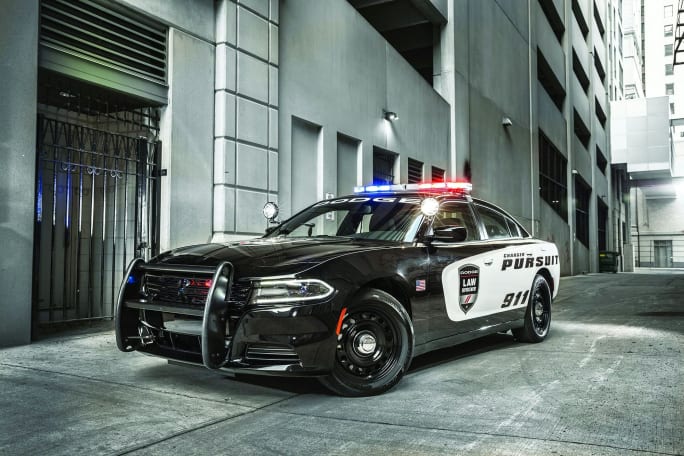At last fall's 2019 Michigan State Police test, the 2020 PI Utility hybrid exhibited blistering speed for an SUV. It topped out at 137 mph, accelerated from 0-60 mph in 7.3 seconds, and from 0-100 mph in 17.7 seconds.
"With hybrids people are used to making some kind of tradeoff; I can be green or I can do this," says Stephen Tyler, Ford Police brand marketing manager. "The most exciting thing about this vehicle is there are no tradeoffs. You don't lose any interior passenger or cargo room. You get greater horsepower, torque, and top speed. In addition, you get significant fuel economy. The days of 'or' are behind us. These are the days of 'and.'"
Fuel savings from the hybrid PI Utility are significant. Ford says the combined highway and city MPG is 24 compared with 17 for the 2018, a 40% increase in mileage. But increased MPG is not the only way the hybrid PI Utility can save agencies on fuel costs. The real fuel expenditure in law enforcement patrol operations is leaving the vehicle running while it's parked at a scene so that it can keep the battery charged to run lights, radios, air conditioning, computers, and other stuff that draws current. The PI Utility hybrid can do that without the engine running. It uses the hybrid batteries and if the charge starts to get low on the batteries it will run the engine just long enough to give them a boost. Ford calculates that the savings over idling a gas engine combined with the MPG increase will save agencies that adopt the PI Utility hybrid $3,500 per vehicle per year.
In addition to performance and fuel savings, the 2020 PI Utility hybrid offers a variety of officer safety features, including:
* Factory-installed Police Perimeter Alert, which uses sensors to monitor an approximately 270-degree area around the vehicle. It detects nearby movement to alert officers of any suspicious activity. When such motion is detected, the system automatically turns on the rear camera, sounds a chime, rolls up the windows, and locks the doors.




![[|CREDIT|]](https://assets.bobitstudios.com/image/upload/f_auto,q_auto,dpr_auto,c_limit,w_684/pm.2016-chevrolet-tahoeppv-001_general-motors_1759886524633_vh9u9b.jpg)
![[|CREDIT|]](https://assets.bobitstudios.com/image/upload/f_auto,q_auto,dpr_auto,c_limit,w_684/pm.dg019_028che4nn5cm4ct2ue5rimcsln950r9_dodge-fca_1759886560050_sm4dn1.jpg)










